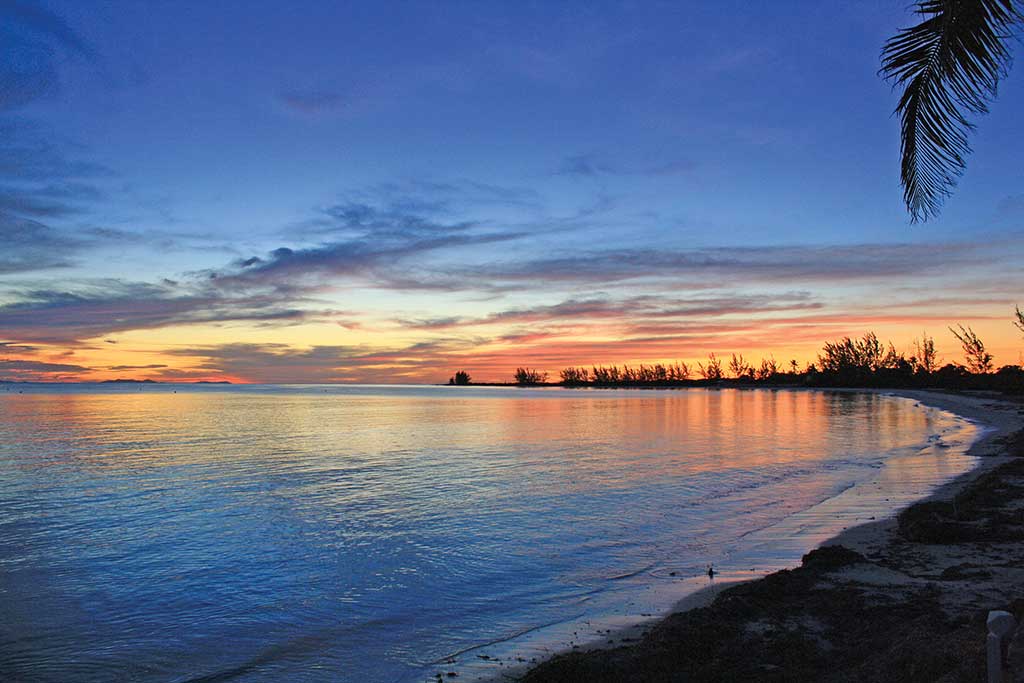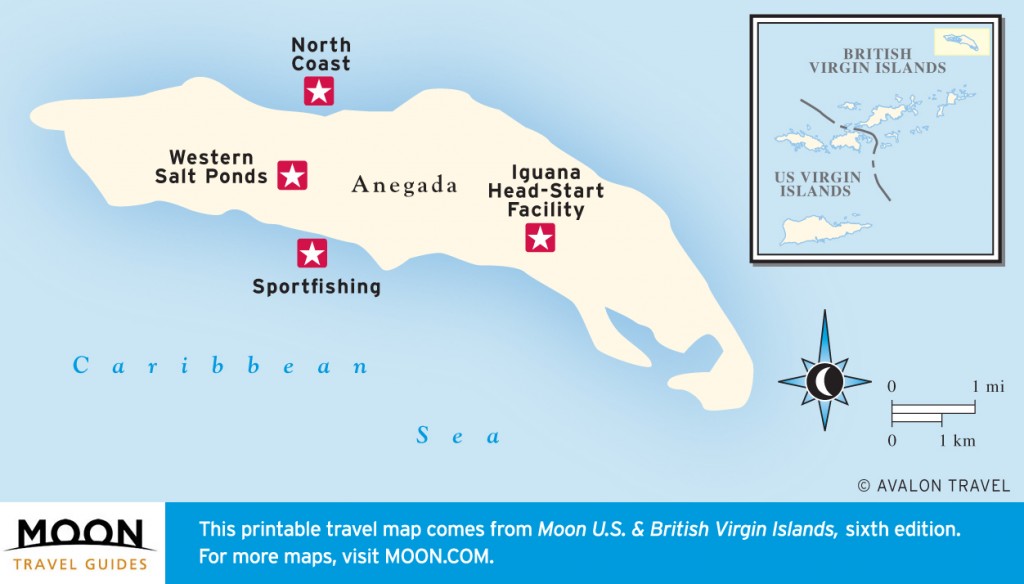Flat, empty, and so low-lying that early explorers feared it would slip beneath the sea, Anegada and its accompanying charms are singular among the Virgin Islands. Its attractions are simple: fresh seafood, solitude, and miles of empty white beaches. Athletes and adventurers can complement the quiet times with world-class kitesurfing, or expeditions through the island’s wild interior, a land of epiphytes, wild orchids, and rare iguanas. Wherever you go, there is little chance of meeting a crowd. More likely, you won’t see anyone at all.

Sunset on Anegada’s southern coast. Photo © Susanna Henighan Potter.
The nearby North Drop, where the sea depth plunges from 180 feet to more than 1,200, teems with large game fish.Anegada lies 14 miles north of Virgin Gorda and is perched on the windward edge of a massive underwater plateau. The 15-square-mile island stands guard over the Anegada Passage, a 6,000-foot underwater chasm used as a thoroughfare by ocean liners and cargo ships. The nearby North Drop, where the sea depth plunges from 180 feet to more than 1,200, teems with large game fish. The island is buffered by the Horseshoe Reef, the third largest reef in the world, which extends south and east of the island like an underwater tail. The reef is as famous for the danger it poses to mariners as it is for its size and beauty.Anegada peaks a mere 25 feet above sea level at its highest point. The west end of the island is dominated by salt ponds, wetlands home to rare and endangered wading birds, including flamingos. The eastern third of the island is a scraggly limestone wilderness, a surprising land of loblolly trees, cacti, epiphytes, wild orchids, and bright yellow century plants. The island is home to the Anegada rock iguana, an ancient-looking lizard that has been the focus of intense conservation efforts since 1997.
The island’s only town, The Settlement, is a sparse collection of homes, shops, churches, and government buildings barely touched by the current of change that has swept through other Virgin Islands. Anegada’s laid-back lifestyle is not an invention for tourists. It’s the real thing.
Most visitors arrive by boat—either by charter boat or on one of the ferries that travel regularly from Tortola and Virgin Gorda. The flurry of activity generated by an arriving ferry is probably the most you will see during your whole stay.

Highlights map of Anegada
Boats can sail up to several docks along the island’s southwestern shore, but only after navigating a perilous course through reefs that have ensnared more than 300 ships since people started to keep track. While beautiful to look at, the beaches along the southern coast are not standouts for swimming and snorkeling. That honor belongs to the north coast beaches: windswept, wild, and nearly always empty. No land stands between Anegada’s north coast and the other side of the Atlantic, and the waves that beat these beaches deposit an intriguing jumble of natural and human-made rubbish.
Anegada is spectacular, but it’s not for everyone, least of all people who want to do something besides enjoy the beauty of their surroundings and the society of their companions. But for travelers wishing to truly get away, this is the place to be.
Excerpted from the Sixth Edition of Moon U.S. & British Virgin Islands.